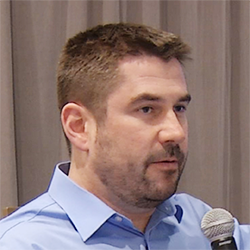This video addresses the syndromic impact of underactivity, overactivity, failure and activation of various components of the autonomic nervous system.
Once you have in mind conceptually the components of the autonomic nervous system and the chemical messengers of the autonomic nervous system, you can begin to understand the syndromic nature of dysautonomias. Particular abnormalities manifest clinically in symptoms or signs where if you have an understanding of the components and the chemical messengers and the organization in the body you can appreciate the syndromic nature of the conditions. Dysautonomias present, they manifest in different ways, in different ways, and once you have in mind the components of the autonomic nervous system and the chemical messengers, the organization, then you can begin to appreciate why such-and-such a person has such-and-such a syndrome. That’s what this segment is about.
What causes underactivity of the sympathetic noradrenergic system? Well by far the most common cause of underactivity of the sympathetic noradrenergic system is drugs. After that, I would think about diabetes in an elderly person. Parkinson’s disease. About 90% of patients with Parkinson’s have evidence of some autonomic problem, and about 40% have orthostatic hypotension which can be related to the underactivity of the sympathetic noradrenergic system. What about parasympathetic nervous system underactivity? Well the most common cause is drugs. What about sympathetic noradrenergic system overactivity? Well the most common cause is drugs. I think you get the idea, it’s drugs every time. So, in somebody who’s referred for dysautonomia, whatever that means, the first thing you do is get a complete record of all the drugs that the person is on, and dietary supplements, because that may the key to helping the patient.
But let’s say it’s not drugs. What are the symptoms or signs that would point specifically, specifically to failure of the sympathetic noradrenergic system? Remember this is the arrangement of the sympathetic noradrenergic system. You’ve got postganglionic nonmyelinated slowly conducting fibers, and norepinephrine is the chemical messenger. The signs include ptosis. Ptosis means a droopy eyelid because that’s under sympathetic noradrenergic regulation. Myosis, that’s the opposite of the belladonna effect, so the pupils are small. Orthostatic hypotension, because norepinephrine is absolutely required for tightening blood vessels when the person stands up and if you can’t tighten those blood vessels just by gravity the blood is going to go to the splanchnic area and pelvic area, legs, and blood pressure’s going to fall.
When it comes to symptoms. Symptoms of sympathetic noradrenergic system failure: orthostatic intolerance (that’s because of the orthostatic hypotension), fatigue, exercise intolerance, heat intolerance, and we’ll go into some of the others. The concept is there’s a syndrome. There are understandable symptoms and signs, which when you can put them together, tell you this looks like sympathetic noradrenergic system failure.
For sympathetic hyperactivity, this is kind of the opposite picture, you have mydriasis, the pupils are dilated. You have cutaneous vasoconstriction, that is why you turn pale, or one reason you turn pale, the blood pressure tends to go up. There is slow gastrointestinal transit because both norepinephrine and adrenaline have an inhibitory effect. There is insulin resistance, this can be relevant to people who have sort of borderline adult onset diabetes. The symptoms include trembling, that’s part of the attempt to get the temperature up, shivering. Salivation, proteinaceous kind of saliva.
Parasympathetic nervous system failure presents completely differently, completely differently. It’s a different syndrome. We talked about the mydriasis. Sicca syndrome means dry mouth and dry eyes. Because of the withdrawal of vagal outflow there’s an increase in heart rate, there’s decreased ability to secrete acid. This is part of the reason why vagotomy has been used for treating peptic ulcer disease for a long time. From the point of view of the splanchnic parasympathetic innervation, there’s constipation – classic symptom of parasympathetic inhibition. And in men, erectile failure.
Hyperactivity is just the opposite. There is too much saliva, too much tear production. There is a tendency towards bronchoconstriction, that means wheezing. The heart rate goes down, and with a cholinergic agonist such as Bethanechol or Urecholine, there’s a tendency towards urination and defecation. Adrenaline produces a tremendous number of symptoms.

Wolfgang Singer, MD
Associate Professor of Neurology
Mayo Clinic Rochester, MN































